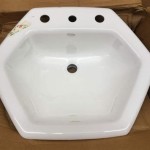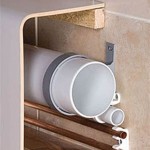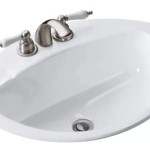Installing a Bathroom Exhaust Fan on the First Floor
A properly functioning bathroom exhaust fan is crucial for maintaining healthy indoor air quality. It removes excess moisture, preventing mold and mildew growth, and eliminates odors. While installing a bathroom fan might seem daunting, careful planning and execution can make the process manageable for a DIY enthusiast. This article provides a comprehensive guide to installing a bathroom exhaust fan on the first floor.
Planning and Preparation
Before starting any electrical work, turn off the power to the bathroom circuit at the main electrical panel. Verify the power is off using a non-contact voltage tester. Choosing the right fan is also essential. Consider the bathroom's square footage to determine the required CFM (cubic feet per minute) rating. Higher CFM ratings indicate more powerful ventilation. Additionally, select a fan with a low sone rating for quieter operation.
Locating the ideal position for the fan is critical. Ideally, the fan should be installed between the shower/tub area and the toilet. If possible, vent the fan directly outdoors through the roof or an exterior wall. Avoid venting into the attic space, as this can lead to moisture buildup and potential damage. Ensure the chosen location provides adequate access to the attic or exterior wall for ductwork installation.
Choosing the Right Ventilation Path
Venting through the roof is generally the most effective method, minimizing duct length and maximizing airflow. However, this might require cutting a hole in the roof and installing appropriate flashing to prevent leaks. Venting through an exterior wall is a viable alternative, particularly if the bathroom is located on an exterior wall. This method often requires less complex ductwork but can impact the exterior aesthetics of the home. Regardless of the chosen path, use rigid metal or PVC ductwork for optimal performance and fire safety. Flexible ductwork is less efficient due to its corrugated interior, which creates more air resistance.
Installing the Exhaust Fan Housing
Once the ventilation path is planned, prepare the opening for the fan housing. If installing in an existing ceiling, use a drywall saw to cut the appropriate size hole based on the manufacturer's instructions. Ensure the opening is aligned with the ceiling joists. Secure the fan housing to the joists using the provided screws. For new construction, install the housing before the ceiling drywall is installed. Make sure the housing is level and flush with the ceiling joists.
Wiring the Exhaust Fan
Connect the wiring according to the manufacturer’s instructions and local electrical codes. Typically, this involves connecting the black wire from the fan to the black (hot) wire in the ceiling, the white wire from the fan to the white (neutral) wire, and the green or bare copper wire from the fan to the ground wire. Use wire connectors to secure the connections and wrap them with electrical tape. If the fan includes a built-in light, connect the light wiring according to the instructions.
Connecting the Ductwork
Attach the ductwork to the fan housing using metal duct tape. Ensure all connections are airtight to prevent air leakage and maximize efficiency. Insulate the ductwork, especially if it runs through unheated spaces like the attic, to prevent condensation. Use foil-faced insulation designed specifically for ductwork.
Finishing the Installation
Once the ductwork is connected and insulated, install the fan grille. Secure it to the housing using the provided screws. Test the fan operation by turning the power back on at the electrical panel. The fan should turn on and effectively remove moisture and odors. Caulk around the edges of the grille to seal any gaps and provide a finished appearance. Periodically clean the fan grille and housing to maintain optimal performance. Dust buildup can restrict airflow and reduce the fan's efficiency.
Safety Precautions
Throughout the installation process, prioritize safety. Always turn off the power before working with electrical wiring. Use appropriate safety equipment, such as safety glasses and gloves. If unsure about any aspect of the installation, consult a qualified electrician. Adhering to safety precautions ensures a successful and safe installation.

Average Cost To Install A Bathroom Fan Forbes Home

How To Install A Bath Exhaust Fan

Your Complete Guide To Bathroom Exhaust Fans Universal

How To Vent A Bathroom With No Outside Access

How To Install A Bathroom Fan Step By Guide Bob Vila

Blog

Bathroom Extractor Fan Installation My Trusted Expert

How To Choose The Right Bathroom Exhaust Fan Make It

What Extractor Fan Do I Need For My Bathroom Blog World

How To Use An In Line Exhaust Fan Vent Two Bathrooms Diy Family Handyman







